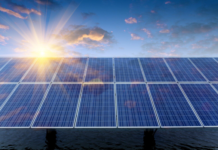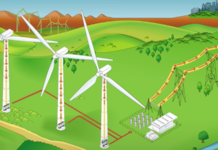
In addition to land-based renewable energy sources, interest is growing in exploring the potential of our oceans as a power source. The ocean has vast energy potential, with sources such as wave and tidal offering promising avenues for renewable energy generation. One of the main advantages of ocean energy is that it is highly predictable and consistent. Unlike other forms of renewable energy, such as solar and wind, developers can harness ocean energy 24 hours a day, 365 days a year. This capability makes it an attractive option for meeting the increasing global demand for electricity. Additionally, many coastal communities around the world already rely on the ocean for their livelihoods, such as through fishing and tourism. By developing ocean energy technologies, these communities could benefit from a new source of income and employment.
However, it is essential to note that ocean energy technology development is still in its early stages, and researchers must overcome several technical, environmental, and regulatory challenges before it can become a viable option on a large scale. Nonetheless, the potential benefits of harnessing the power of our oceans for renewable energy generation make it a promising area for further exploration and investment. Organizations like Europe’s Ocean Energy Europe (OEE) and the United States National Renewable Energy Laboratory (NREL) focus on creative answers to today’s energy challenges. The NREL advances the engineering and science of energy efficiency, renewable power technologies, and sustainable transportation while providing the knowledge to integrate and optimize energy systems. While the not-for-profit OEE, which is composed of Europe’s leading utilities, industrialists, and research institutes, make it their mission to create a strong environment for the development of ocean energy. Additionally, several universities around the world are conducting research on wave and tidal energy along with industry associations and government agencies.
Waves and Tides
Wave energy and tidal energy are both forms of renewable energy that can be harnessed from the ocean. Wave energy is generated by the movement of ocean waves caused by wind blowing across the water’s surface. This movement creates mechanical energy that can be captured and converted into electricity. Several technologies are used to harvest wave energy, including:
- Oscillating Water Column (OWC): This technology uses a partially submerged chamber to capture the movement of waves. As the waves enter the chamber, the air inside is compressed and forced through a turbine, which generates electricity.
- Point Absorber: This technology uses a buoy that floats on the water’s surface and connects to a device that converts the up-and-down motion of the waves into electricity.
- Overtopping Device: This technology uses a reservoir to collect the water pushed up and over a ramp by the incoming waves. The water is then released through a turbine, generating electricity.
Tidal energy, on the other hand, is generated by the gravitational pull of the moon and the sun on the Earth’s oceans. As the tides rise and fall, they create a flow of water that can be harnessed and converted into electricity using turbines. Tidal turbines are like wind turbines, but instead of using wind to turn the blades, they use the flow of water to generate electricity. Several different technologies are used to harvest tidal energy, including:
- Tidal Stream Generator: This technology uses underwater turbines turned by the flow of water caused by the tides. The turbines are typically mounted on the seabed or a floating platform.
- Barrage: This technology involves building a dam across an estuary or bay. As the tide comes in, the water is trapped behind the dam and then released through turbines as the tide goes out.
- Dynamic Tidal Power: This technology involves building a long wall or fence across a bay or estuary. As the tide flows in and out, the water passes through turbines in the wall, generating electricity.
Many Potential Applications
Several countries around the world have already begun using wave and tidal energy harvesting to generate electricity. At present, the United Kingdom is a world leader in developing wave and tidal energy technology. The country has several wave and tidal energy projects in operation, including the MeyGen Tidal Energy Project in Scotland, which is one of the largest tidal energy projects in the world. Portugal is another country investing heavily in wave energy technology and has several wave energy projects in operation, including the Agucadoura Wave Farm, the world’s first commercial wave energy project. Other countries include Australia, China, and Canada, which has several tidal energy projects under development, including the Fundy Ocean Research Centre for Energy (FORCE) in Nova Scotia.
Although still in their infancy, wave and tidal energy technologies possess immense potential in fulfilling the escalating need for sustainable, clean energy worldwide. By replacing traditional fossil fuel-powered electricity generation, they can significantly contribute to reducing greenhouse gas emissions. For instance, wave and tidal energy can be used to generate electricity that can power homes and businesses in coastal communities as well as power offshore facilities such as oil and gas platforms and desalination plants. Additionally, wave and tidal energy can provide a reliable and predictable renewable energy source, which helps to stabilize the electrical grid.
Environmental and Ecosystems Concerns
While wave and tidal energy are considered renewable and environmentally friendly sources of energy, some concerns still exist regarding their development and deployment. Some of these concerns include:
- Impact on marine ecosystems: The installation and operation of wave and tidal energy devices can impact marine ecosystems. For example, the noise generated by these devices may have an adverse effect on marine mammals and other marine life.
- Changes to ocean currents and sediment transport: The installation of wave and tidal energy devices can alter the natural flow of ocean currents, potentially affecting sediment transport and other ecological processes.
- Risk of collision with marine vessels: Wave and tidal energy devices may pose a risk of collision with marine vessels, particularly in areas with heavy shipping traffic.
- Visual impact: The installation of large-scale wave and tidal energy devices may have a visual impact on coastal areas, potentially affecting tourism and other coastal activities.
- Interference with fishing and other marine activities: The deployment of wave and tidal energy devices may interfere with fishing and other marine activities, potentially impacting the livelihoods of coastal communities.
Developers must carefully assess the potential environmental impacts of wave and tidal energy projects and design and implement appropriate mitigation measures. This may involve conducting environmental impact assessments, monitoring the effects of energy devices on marine ecosystems, and engaging with stakeholders to ensure that their concerns are addressed.
Featured Product
This week’s New Tech Tuesday features the Amphenol LTW DeepTronica® Specialized Cables, the ultimate in dry-mate and wet-mate connectors for all underwater connectivity needs.
The DeepTronica® connector series from Amphenol LTW is designed to operate flawlessly even in the harshest underwater environments, up to depths of 7000 meters. With three sub-series to choose from: Xiento-2M Series (under 200m), Abyss Series (6,000m), and Hadalpelagic Series (7,000m)—these connectors are an ideal solution for any underwater application, from wave and tidal energy projects to deep-sea exploration. The DeepTronica series features four connector types: circular, metal, low profile, and Ethernet, providing a wide range of options to meet specific needs. These connectors are designed to solve common issues in shallow-water emersion applications, such as poor sealing and corroded contacts due to low-pressure cycles. The high-quality thermoplastic shell, combined with two O-rings, provide exceptional sealing, ensuring that critical underwater connections remain secure and reliable. Plus, with contact densities of up to 25, these connectors are also perfect for high-density applications and can be mated or unmated in both dry and wet environments. It’s evident that the DeepTronica series connectors offer numerous advantages, making them an ideal option for wave and tidal energy needs.
Takeaway
The ocean has great potential as a renewable energy source, particularly through wave and tidal energy. However, these technologies are still in the early stages and face various technical, environmental, and regulatory challenges. Despite this, several countries worldwide are already using wave and tidal energy to generate electricity. Given the promising benefits of ocean-based renewable energy, it certainly is worth further exploration, and the Amphenol LTW DeepTronica Specialized Cables offer a valuable solution due to their many advantages.
The blog has been published with permission.


















